Cleaning a cockatiel’s nostrils is important because it helps to prevent respiratory issues caused by blockages in the bird’s nasal passages.
When a bird’s nostrils are blocked, it can make it difficult for them to breathe properly, which can lead to serious health problems if left untreated.
Regular cleaning of the nostrils can help to prevent blockages and ensure that the bird is able to breathe comfortably.
In this article, we will be discussing the causes of blocked nostrils in cockatiels, the symptoms to look out for, how to properly prepare for cleaning a cockatiel’s nostrils, the steps to take during the cleaning process, and the aftercare that is needed to ensure the bird’s continued health.
We will also provide tips and recommendations for preventing future blockages and maintaining the overall health of your cockatiel.
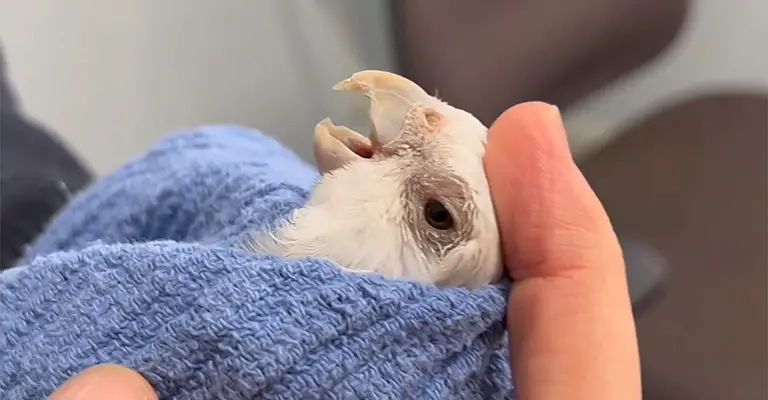
Causes of Blocked Nostrils
Blocked nostrils in cockatiels can be caused by various factors. Some of them are discussed right below.
Dust and Debris
Dust, feathers, and other particles in the bird’s environment can enter the nasal passages and cause blockages. This can happen when the bird inhales these particles, leading to them becoming lodged in the nasal passages.
Allergies
Cockatiels, like humans, can develop allergies to certain substances. Allergens such as specific foods, cleaning products, or types of bedding can trigger an allergic reaction in birds.
This reaction can result in inflammation and swelling in the nasal passages, leading to blocked nostrils.
Infections
Bacterial or viral infections can affect the respiratory system of cockatiels, including the nasal passages. Infections can cause inflammation, swelling, and the production of mucus, leading to blocked nostrils.
Common symptoms of respiratory infections in cockatiels include nasal discharge and sneezing.
Tumors or Growths
Benign or malignant growths can occur in the nasal passages or other areas of the bird’s respiratory system.
These growths can physically obstruct the nasal passages, resulting in blocked nostrils. Additionally, they can cause other respiratory symptoms like difficulty breathing, sneezing, and coughing.
Symptoms of Blocked Nostrils
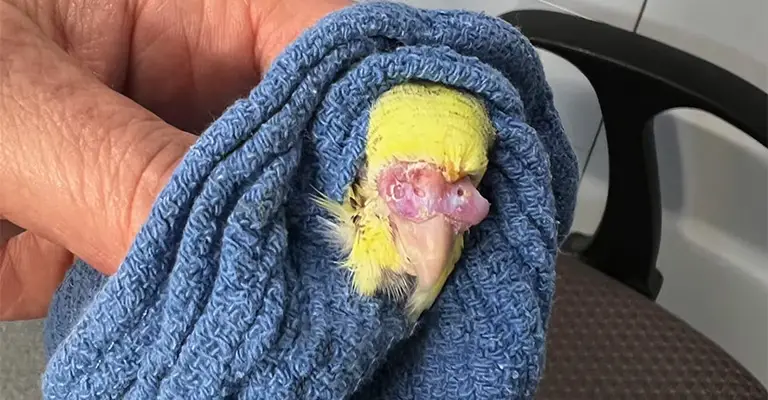
Symptoms of blocked nostrils in cockatiels can manifest in several ways, including:
Difficulty Breathing
One of the most noticeable symptoms is difficulty breathing. When the nasal passages are blocked, it becomes challenging for the bird to inhale sufficient oxygen.
As a result, the cockatiel may exhibit signs such as panting, open-mouth breathing, or extending its head in an attempt to breathe more easily. In severe cases, respiratory distress or failure can occur.
Discharge From the Nostrils
Another common symptom of blocked nostrils is the presence of discharge from the bird’s nostrils. The discharge can vary in color, ranging from clear to white or yellowish.
The type and color of the discharge can provide clues about the underlying cause of the blockage, which may include infections, allergies, or the presence of tumors.
Sneezing or Coughing
Cockatiels with blocked nostrils may frequently sneeze or cough as their body tries to expel the obstruction from the nasal passages. This can be accompanied by a watery or foamy discharge from the nostrils.
Loss of Appetite or Weight Loss
Blocked nostrils can affect a bird’s ability to eat and drink comfortably. When breathing is compromised, cockatiels may experience a decreased appetite, leading to weight loss over time. If the blockage persists or remains untreated, it can result in serious health complications.
Behavioral Changes
Cockatiels may exhibit changes in behavior when they experience blocked nostrils. They may become more lethargic, spend more time resting, or display signs of discomfort. Additionally, they may exhibit reduced vocalization or less interest in their surroundings.
Preparing for Cleaning
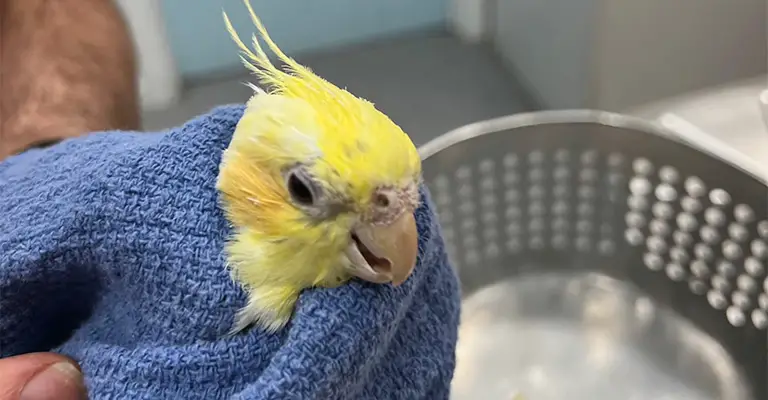
Preparing for cleaning a cockatiel’s nostrils requires careful planning and ensuring the bird’s safety and comfort. Here are some steps to take when preparing for the cleaning process:
Gather Necessary Supplies
Collect all the supplies you will need for cleaning, including a damp cloth, cotton swab, small syringe, misting bottle, and tweezers (if required).
Ensure that the items are clean and sanitized before use. Also, prepare a gentle cleaning solution such as saline solution or a mild soap and water solution.
Create a Calm Environment
Find a quiet and well-lit area where you can comfortably handle the bird. Dimming the lights or using a soft light source can help create a calm atmosphere. Speak to the cockatiel in a soothing tone to help keep it calm and relaxed.
Ensure Bird’s Comfort
Before starting the cleaning process, ensure the bird is comfortable and at ease. Offer a favorite treat or toy to help distract and engage the bird positively. Be gentle and patient, allowing the cockatiel to adjust to your presence.
Provide a Secure Surface
Place a towel or blanket on a stable and secure surface, such as a table or countertop, to provide a safe area for the bird during the cleaning process. Make sure the surface is non-slip to prevent any accidents or injuries.
Maintain Safety Precautions
It is essential to handle the bird carefully to prevent stress or harm. Support the cockatiel with a gentle and secure grip, avoiding any excessive force or squeezing. Be mindful of the bird’s delicate anatomy, particularly around the head and beak.
Have a vet’s contact information:
While cleaning the nostrils can be done at home, it is crucial to have the contact information of a veterinarian readily available.
If the bird shows signs of distress or if you are unsure about the process, consult a veterinarian for professional guidance and assistance.
Remember, cleaning the nostrils should only be done if the bird is calm, cooperative, and not exhibiting signs of distress.
If you are unsure or uncomfortable with the process, it is best to consult a veterinarian who can perform the cleaning procedure safely and effectively.
How to Clean the Nostrils?
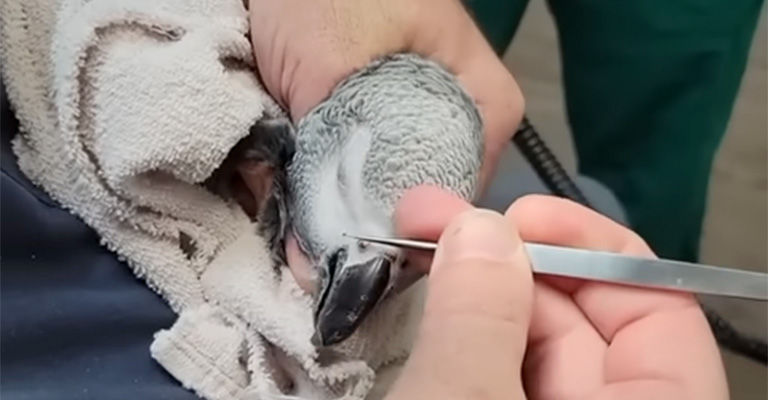
Cleaning the nostrils of a cockatiel requires gentle and careful handling. Here is a step-by-step guide on how to clean the nostrils:
Ensure a Calm and Comfortable Environment
Place the cockatiel on a secure and stable surface covered with a towel or blanket. Make sure the bird feels safe and calm before proceeding.
Prepare a Cleaning Solution
Use a saline solution specifically made for birds or create a mild soap and water solution. Ensure the solution is at room temperature. Avoid using strong chemicals or substances that may be harmful to the bird.
Dampen a Cloth or Cotton Swab
Dip a clean cloth or cotton swab into the cleaning solution, ensuring it is damp but not dripping. It should be moist enough to clean the nostrils effectively.
Gently Wipe the Nostrils
Hold the bird gently but securely to avoid any unnecessary stress. With a light touch, gently wipe the exterior of the nostrils using a damp cloth or cotton swab. Avoid inserting the cloth or swab too far into the nostrils to prevent injury.
Use a Small Syringe or Misting Bottle (Optional)
If the blockage persists or if recommended by a veterinarian, you can use a small syringe or misting bottle filled with room temperature water.
Squirt a small amount of water into the nostrils to help clear any remaining blockage. Take care not to use excessive force or introduce too much water into the nostrils.
Observe the Bird’s Response
Pay attention to the cockatiel’s reaction during the cleaning process. If the bird shows signs of distress, discomfort, or resistance, stop the cleaning procedure and consult a veterinarian for assistance.
Monitor for Any Improvement
After cleaning the nostrils, observe the bird for any signs of improved breathing, reduced discharge, or alleviation of symptoms. If the blockage persists or if other concerning symptoms arise, seek professional veterinary advice.
Aftercare
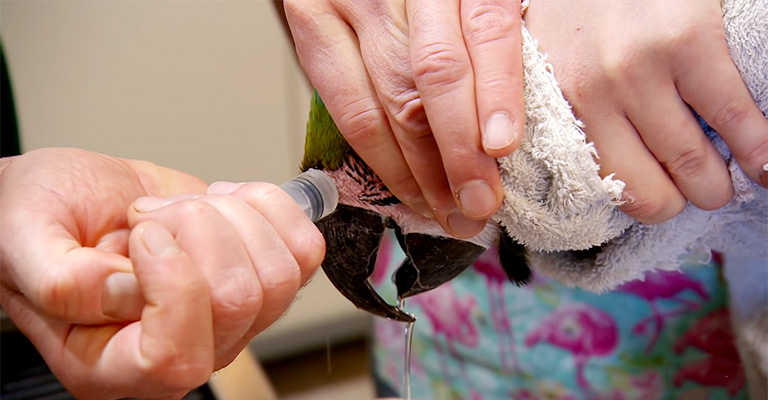
After cleaning the nostrils of a cockatiel, it is crucial to provide appropriate aftercare to ensure the bird’s well-being and monitor for any changes in health. Here are some important points to consider for aftercare:
Observation
Monitor the bird closely after cleaning the nostrils. Observe for any signs of distress, such as difficulty breathing, sneezing, coughing, or changes in behavior. Pay attention to the bird’s appetite, weight, and overall activity level.
Consult a Veterinarian if Needed
If the blockage persists or if the bird shows signs of distress or discomfort after cleaning, it is important to seek veterinary advice promptly.
A veterinarian can provide a thorough examination, determine the underlying cause of the blockage, and recommend appropriate treatment if necessary.
Follow Veterinary Recommendations
If the veterinarian has provided specific instructions or prescribed medication, it is essential to follow their recommendations diligently. Administer any prescribed medication as instructed and schedule any recommended follow-up visits.
Maintain a Clean and Dust-free Environment
To prevent future blockages, ensure the bird’s environment is kept clean and free from excessive dust and debris.
Regularly clean the bird’s cage, accessories, and surrounding area using bird-safe cleaning products. Provide clean and dust-free bedding to minimize the risk of irritants or allergens.
Minimize Exposure to Potential Allergens
Identify and avoid any potential allergens that may trigger respiratory issues in the cockatiel. This may include certain types of food, cleaning products, scents, or environmental factors. Consult with a veterinarian for guidance on allergen management specific to your bird.
Regular Veterinary Check-ups
Schedule regular check-ups with a veterinarian to monitor the bird’s overall health and address any potential issues before they become more severe. Regular examinations can help detect and address respiratory issues early on and promote the bird’s well-being.
FAQs
It is recommended to clean your cockatiel’s nostrils on a regular basis as part of their overall care and maintenance. However, the frequency of cleaning will depend on the individual bird and its specific needs. If you notice that your bird’s nostrils are frequently blocked or if they show signs of distress, it may be necessary to clean them more often. It’s best to consult a veterinarian for guidance on how often to clean your bird’s nostrils.
Tweezers can be used to remove blockages from a cockatiel’s nostrils, but it should be done with caution. It is important to be gentle and avoid causing any discomfort or injury to the bird. If you are not comfortable using tweezers or if the blockage is not easily removed, it is best to consult a veterinarian for assistance.
Yes, smoking around a cockatiel can cause blocked nostrils as the smoke can irritate the bird’s nasal passages, leading to inflammation and blockages. It is best to avoid smoking around birds and to provide a clean and smoke-free environment for their well-being.
Conclusion
Cleaning a cockatiel’s nostrils is an essential part of maintaining its respiratory health and preventing potential issues.
By understanding the causes and symptoms of blocked nostrils, and following the appropriate cleaning and aftercare steps, bird owners can help their cockatiels breathe easier and avoid complications.
Regular veterinary check-ups and a clean, dust-free environment contribute to the overall well-being of these beloved pets.
Remember, a healthy bird is a happy bird, so take the necessary steps to provide the best care for your feathered friend. Best of Luck.